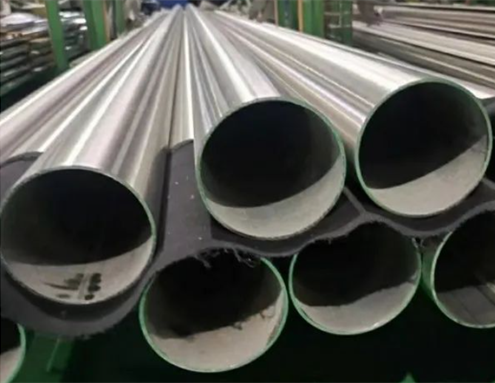Popular science: How are stainless steel engineering pipes connected?
As an important material widely used in the construction, engineering, and manufacturing industries, stainless steel pipe connection technology is one of the keys to ensuring project quality and service life. The editor of stainless steel pipe manufacturer, briefly introduces the connection methods of stainless steel pipes, including welding, threaded connection, pressure connection, etc., to help you choose the best connection method suitable for your project.

1. Welding connection
Welding is the most commonly used method for connecting stainless steel pipes. It can achieve strong connections with high load-bearing capacity and corrosion resistance. The welded connections of stainless steel pipes can be divided into two types: manual welding and automated welding. Manual welding is suitable for small projects or special-shaped pipe connections, while automated welding is suitable for large projects and highly repetitive pipe connections.
When welding stainless steel pipes, you need to pay attention to the following points: First, choose the appropriate welding method. Common ones include TIG welding, MIG welding, electric welding, etc. Secondly, ensure the cleanliness of the welding surface to avoid the presence of dust, dirt, and other impurities. Finally, appropriate preheating and adjustment of welding parameters should be carried out before welding to ensure welding quality and connection strength.
2. Threaded connection
A threaded connection is a simple and reliable way to connect stainless steel pipes. It is suitable for engineering projects with smaller pipe diameters and lower pressures. Stainless steel pipe thread connections are divided into two types: internal threads and external threads. Common thread connection standards include the internationally accepted Willai thread, the commonly used domestic tapered pipe thread, etc.
When making threaded connections for stainless steel pipes, you need to pay attention to the following points: First, the sealing of threaded connections is poor, so sealants or gaskets need to be used to seal them to prevent water leakage. Secondly, the threaded connection must be installed with moderate attention, neither too loose to cause leakage nor too tight to cause deformation. Finally, be careful when disassembling to avoid damaging or straining the threads.
3. Pressure connection
Pressure connection is a method of connecting stainless steel pipes through pre-pressurization. It is suitable for projects with larger pipe diameters and higher pressures. There are two main types of pressure connections for stainless steel pipes: socket connections and flange connections. The socket connection is to inserts the pipe into the connection port and seals it under pressure, while the flange connection is to connects the pipes through flanges and bolts.
When making pressure connections of stainless steel pipes, you need to pay attention to the following points: First, choose appropriate sealing materials. Common ones include rubber gaskets, PTFE gaskets, etc. Secondly, the installation requirements must be strictly followed to ensure the sealing and safety of the connection. Finally, testing should be performed before connection to ensure the reliability and voltage resistance of the connection.
To sum up, stainless steel pipe connection technology is an important link in ensuring project quality and service life. Whether it is a welded connection, a threaded connection, or a pressure connection, it needs to be operated by the correct methods and requirements. Choosing the appropriate connection method can not only ensure the stability and durability of the project but also improve work efficiency and safety. I hope this article is helpful to your engineering projects!


